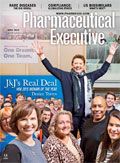Biosimilars in the US: Five Potential Sticking Points
Pharmaceutical Executive
Although the strategic hurdles of biosimilars market entry are not new, the task of imitating substantially more complex molecular entities offers up a host of new operational questions for pharma.
Following last month's historic approval of Sandoz's biosimilar Zarxio, as many as three more biosimilars could get FDA nods in 2015. As we await the inevitable, Pharm Exec decided to examine five additional issues that warrant consideration.
1.) Levels of acceptance: Extrapolation, interchangeability, and switching
Zarxio, known in Europe as Zarzio, now has the FDA's OK for use across all indications included in the reference product's label. The "extrapolation" across all of the innovator drug's approved indications is one notable win for biosimilar makers. Running trials for each disease state would be costly. A formal designation of interchangeability from the FDA will be another step as drugmakers, payers, doctors, pharmacists, and patients will contest a power struggle over whether a script can be transferred to the biosimilar and how. Current state legislation for biosimilars (both passed into law and currently before various state legislators) regarding substitution, notification, etc., is widely varying.
Biosimilar makers will go for one additional level of acceptance to be fully ingratiated into the marketplace-switching. But until switching studies can show that a biosimilar does not raise the incidence of an immunogenic response, expect physicians to be extremely hostile to the idea of switching a patient who is being successfully treated by the innovator. For a good while, biosimilars will be limited to new patients.
2.) Some biosimilars might be better, others might seem better
The mindset surrounding biosimilars is that they will be a lesser version of the original. But in some cases, the biosimilar might be superior to the innovator product. The question comes down to variability, which is the whole reason we're sticking to the term "biosimilar." Biosimilars will vary from the innovator drug and, consequently, may have lower efficacy, greater safety concerns, and increased immunogenicity. But biologic therapies have considerable variation already. On top of that, physicians will speak of a perception of variation over time that exists. Statements like "2005 Humira is different from 2015 Humira" are not uncommon. And it's human nature to make judgments based on anecdotal evidence-doctors and patients included. Be prepared for case study "evidence" and trials of small numbers. Expect headlines saying biosimilar X is less expensive AND better! A headline like that could go viral.
3.) Doctors dubious
Speaking to physicians, you see some surprisingly divergent views on biosimilars, some being very open to use and others are much more cautious. Clearly, advertising and education campaigns will be necessary, and to "facilitate" doctor acceptance, there will no doubt be payer pressure using mechanisms like formulary exclusion. For now, the mindset is the same for physicians with biosimilars and biologics. When a patient is doing well on a treatment, don't change them. And once a response is lost due to immunogenicity, it is lost forever. New patients will be a different story.
4.) Trends driving acceptance-and the Sovaldi context
For the last few years, estimates for the likely range of price reduction for a biosimilar drug have been 25%-30% compared to the innovator product. So news out of Norway, that Orion Pharma is offering a 72% price reduction for Remsima, the infliximab biosimilar via the nations' tender system could cause a "shock wave," according to Joseph Fuhr, Professor of Economics, Widener University. This could give other groups in the European Union and US the gumption to demand significantly greater reductions.
5.) Things will get complicated
Several regulatory issues remain, one being nomenclature standards. Zarxio's approval came with a placeholder nonproprietary name, filgrastim-sndz, rather than certainty on the issue. Hopefully this, and some other questions, will be answered once the biosimilars truly start to complicate markets. Five tumor necrosis factor (TNF) inhibitors is a complicated market already. But start wrapping your head around two or three, and eventually five or six, products for each molecule.
Timing into markets could also be key. Unlike with innovator drugs where "first to market" can be crucial, biosimilars may see a second-mover advantage. Sandoz is taking the brunt of costs not just battling the innovator company in courts but also navigating the nebulous FDA. It will be interesting to see if Apotex's pegfilgrastim can enter the market using benchmarks set by Sandoz. But considering the many complexities and the potential massive systemic cost savings, can anyone blame FDA from taking its time for further guidance? Rather be late and right, than early and wrong.
Casey McDonald is Pharm Exec's Senior Editor. He can be reached at cmcdonald@advanstar.com.
For the full version of this article, click here.

Navigating Distrust: Pharma in the Age of Social Media
February 18th 2025Ian Baer, Founder and CEO of Sooth, discusses how the growing distrust in social media will impact industry marketing strategies and the relationships between pharmaceutical companies and the patients they aim to serve. He also explains dark social, how to combat misinformation, closing the trust gap, and more.
FDA Grants Priority Review to Regeneron’s Eylea for Macular Edema Following Retinal Vein Occlusion
April 18th 2025Regulatory action was based on data from the Phase III QUASAR trial, which demonstrated that Eylea HD dosed every eight weeks achieved non-inferior visual acuity outcomes compared to Eylea in patients with macular edema following retinal vein occlusion.
Pfizer, GSK Gain ACIP Recommendations for RSV and Meningococcal Vaccines
April 18th 2025The Centers for Disease Control and Prevention’s Advisory Committee on Immunization Practices voted to expand access to Pfizer’s respiratory syncytial virus vaccine Abrysvo for high-risk adults in their 50s and voted in favor of GSK’s meningococcal vaccine, Penmenvy, for streamlined adolescent protection.